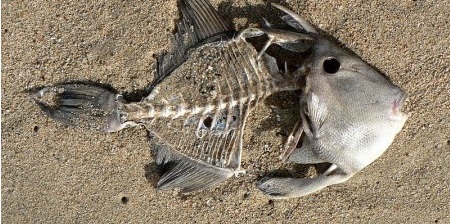21st Century Wire says…
It’s not a popular topic in any news media for two reasons – it’s nearly invisible, and its totally fatal. Some practical questions come to mind…
What is the true nature of the risk?
Even if our governments knew the risks to public health and safety, would they ever openly admit these to the public?
If our governments are withholding such vital information, then would we know how to protect ourselves from harmful exposure?
Fukushima Nuclear Radiation Spikes 7,000% as Contaminated Water Pours into the Ocean
Ethan A. Huff
Natural News
Cleanup crews trying to mitigate Japan’s never-ending radiation crisis at Fukushima ran into more problems recently after sensors monitoring a drainage gutter detected a huge spike in radiation levels from wastewater pouring into the Pacific Ocean.
The Tokyo Electric Power Company says radiation levels were up to 70 times, or 7,000 percent, higher than normal, prompting an immediate shutdown of the drainage instrument. The first readings came around 10 a.m. local time on February 22, setting off alarms not once but twice as radiation levels spiked to extremely high levels.
“The levels of beta ray-emitting substances, such as strontium-90, measured 5,050 to 7,230 becquerels per liter of water between 10:20 a.m. and 10:50 a.m.,” reported The Japan Times. “TEPCO requires radioactivity levels of groundwater at the plant discharged into the sea to remain below 5 becquerels.”
TEPCO shut off leaky gutter, but radiation continued to spike throughout day
The gutter was quickly decommissioned to prevent further radiation emissions, but the leaks reportedly continued throughout the day, with radiation levels hovering between 10 and 20 times higher than normal. TEPCO says it doesn’t know what caused the sudden radiation spikes.
“With emergency surveys of the plant and monitoring of other sensors, we have no reason to believe tanks storing radioactive waste water have leaked,” stated a plant official to the media. “We have shut the gutter [from pouring water to the bay]. We are currently monitoring the sensors at the gutter and seeing the trend.”
Multiple major leaks reported as Fukushima generates 400 tons of new radioactive waste daily
Just four days prior to the leak, the International Atomic Energy Agency congratulated TEPCO for its continued cleanup efforts at the Fukushima site. This is despite numerous other radiation leaks, some of them quite major, that have occurred in recent months at the shuttered facility.
Back in October 2013, for instance, a failed transfer of radioactive wastewater from one storage tank to another resulted in more than four tons of highly contaminated sludge being dumped into the ground. Not long before this, 300 tons of radioactive waste reportedly leaked from another nearby storage tank.
As we reported earlier in the month, a worker actually died after falling into a radioactive storage tank during a routine inspection. The 33-foot container that swallowed the man is one of many at the site that holds a portion of the 400 tons of highly radioactive water generated daily at Fukushima.
Fukushima workers build one new storage tank daily, but this can’t go on forever
The Japan News reports that large storage tanks capable of holding up to 2,900 tons of contaminated water are constantly being built at the site, up to one new tank daily, in fact. At some point, though, other mitigatory measures will have to be implemented, as there’s only so much space available to build more tanks.
According to The Ecologist, the Reactor 3 fuel storage pond also still contains upwards of 89 metric tons of plutonium-based, mixed-oxide fuel that, should the pond leak or dry up, could result in another major reactor meltdown. Reactor 3, as you may recall, experienced a full meltdown back in 2011 that resulted in the reactor core falling through the floor to the bottom of the containment vessel.
The chart at the following link, which was put together just days after the tsunami and earthquake hit Fukushima, provides a visual breakdown of radiation exposures from various sources. It can be used to quantify the threat associated with each respective leak:
















